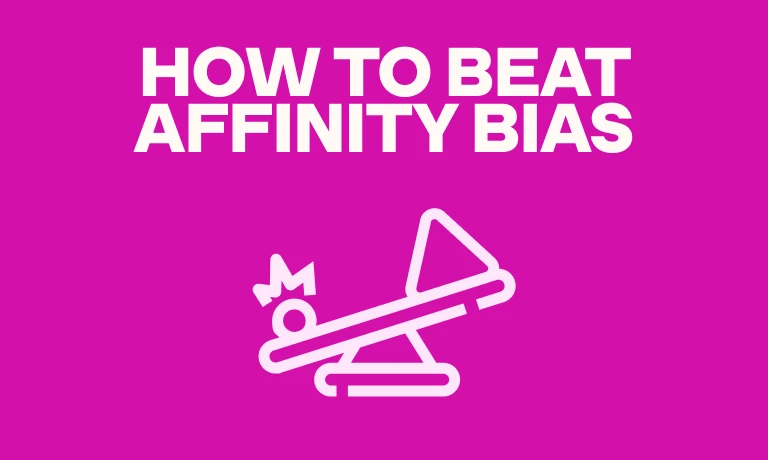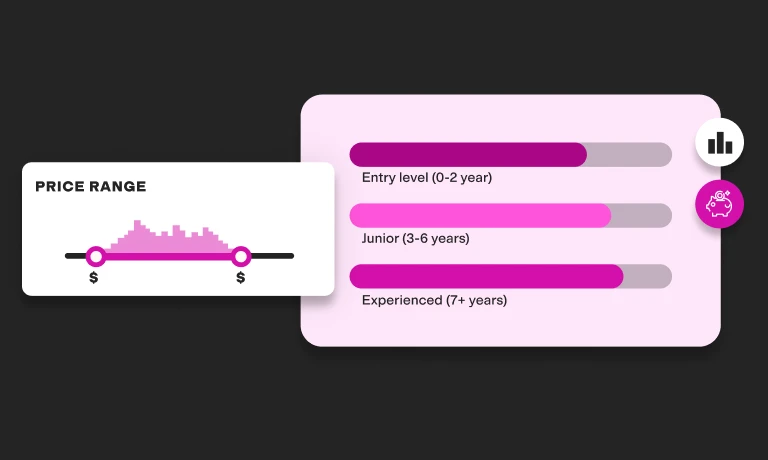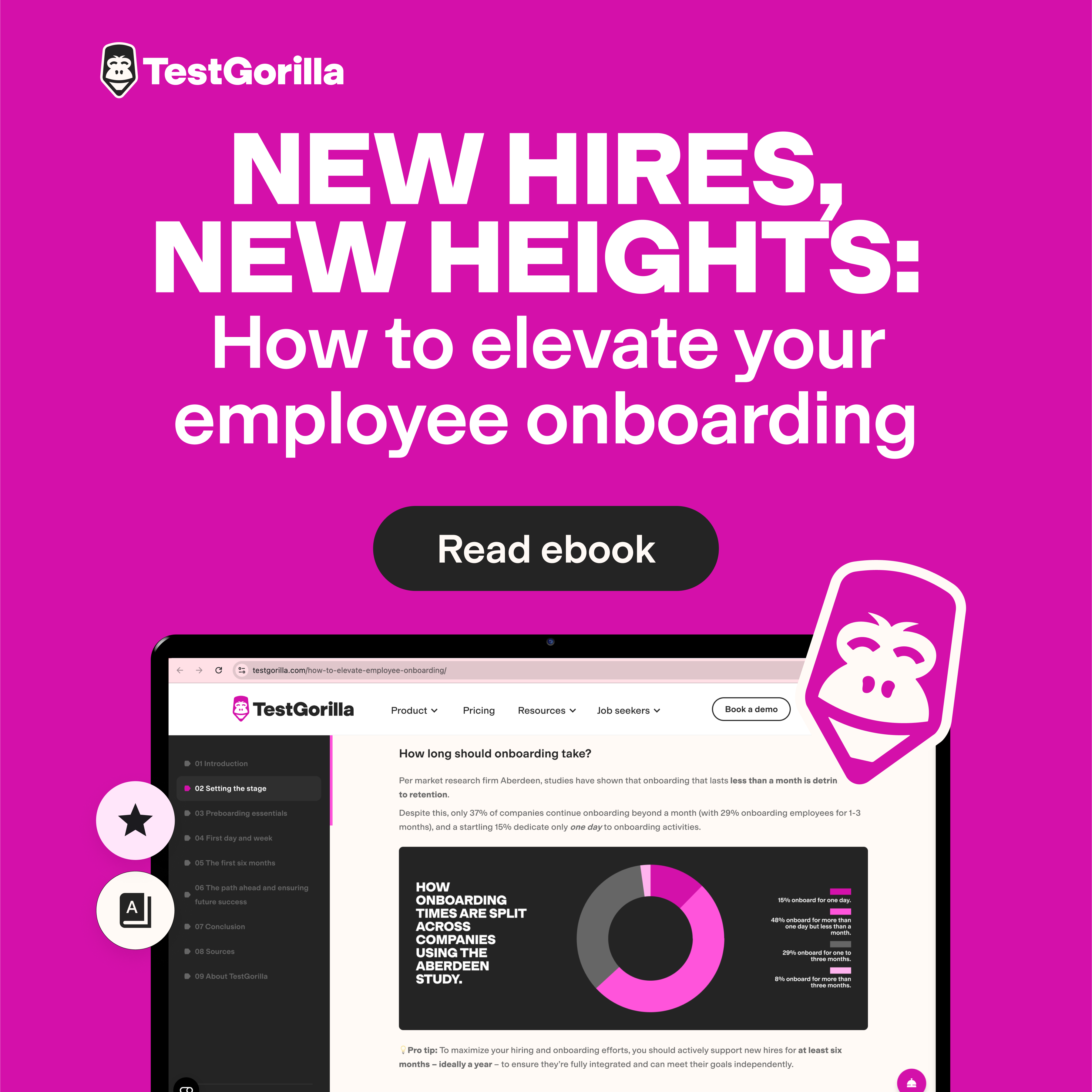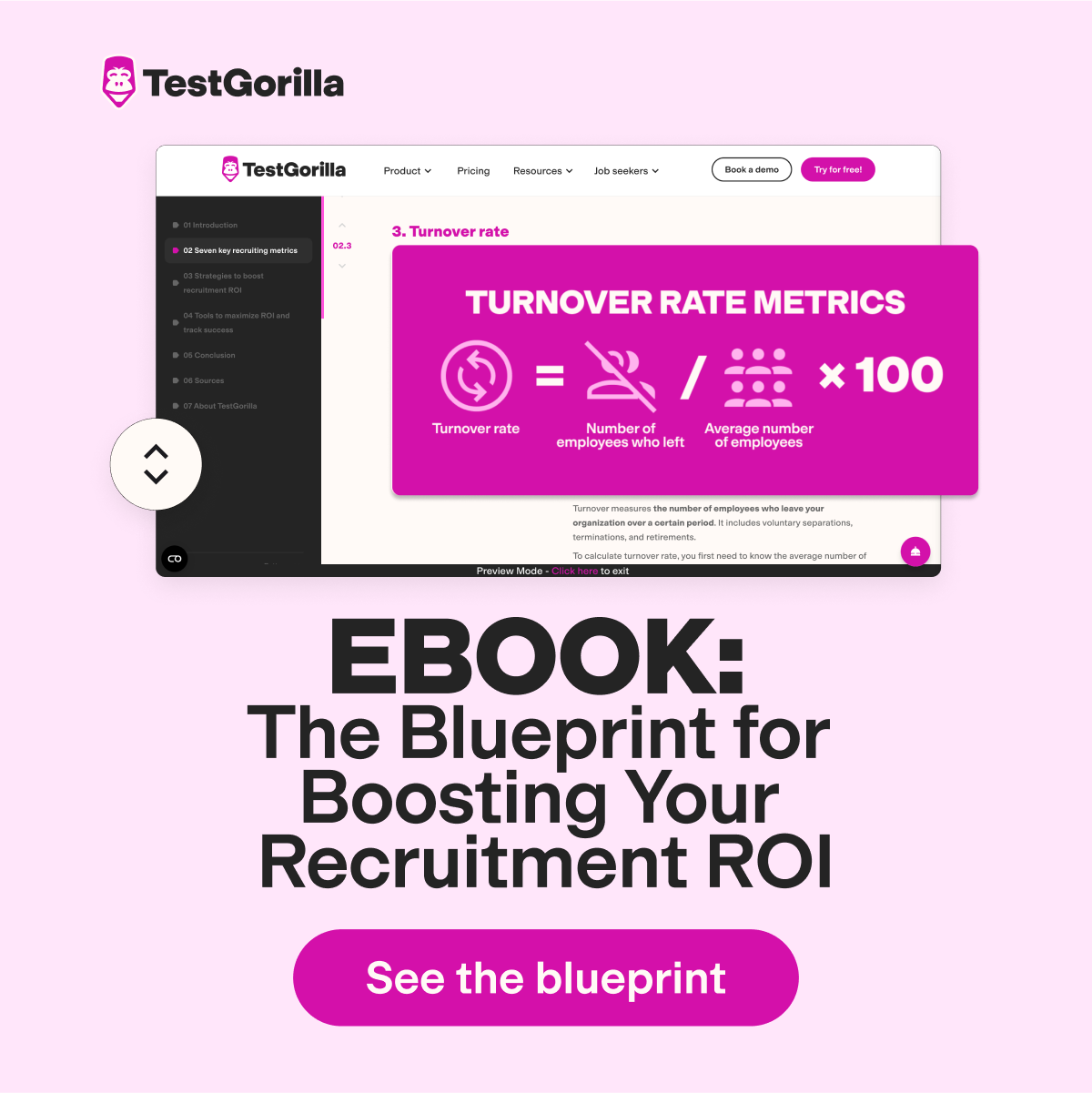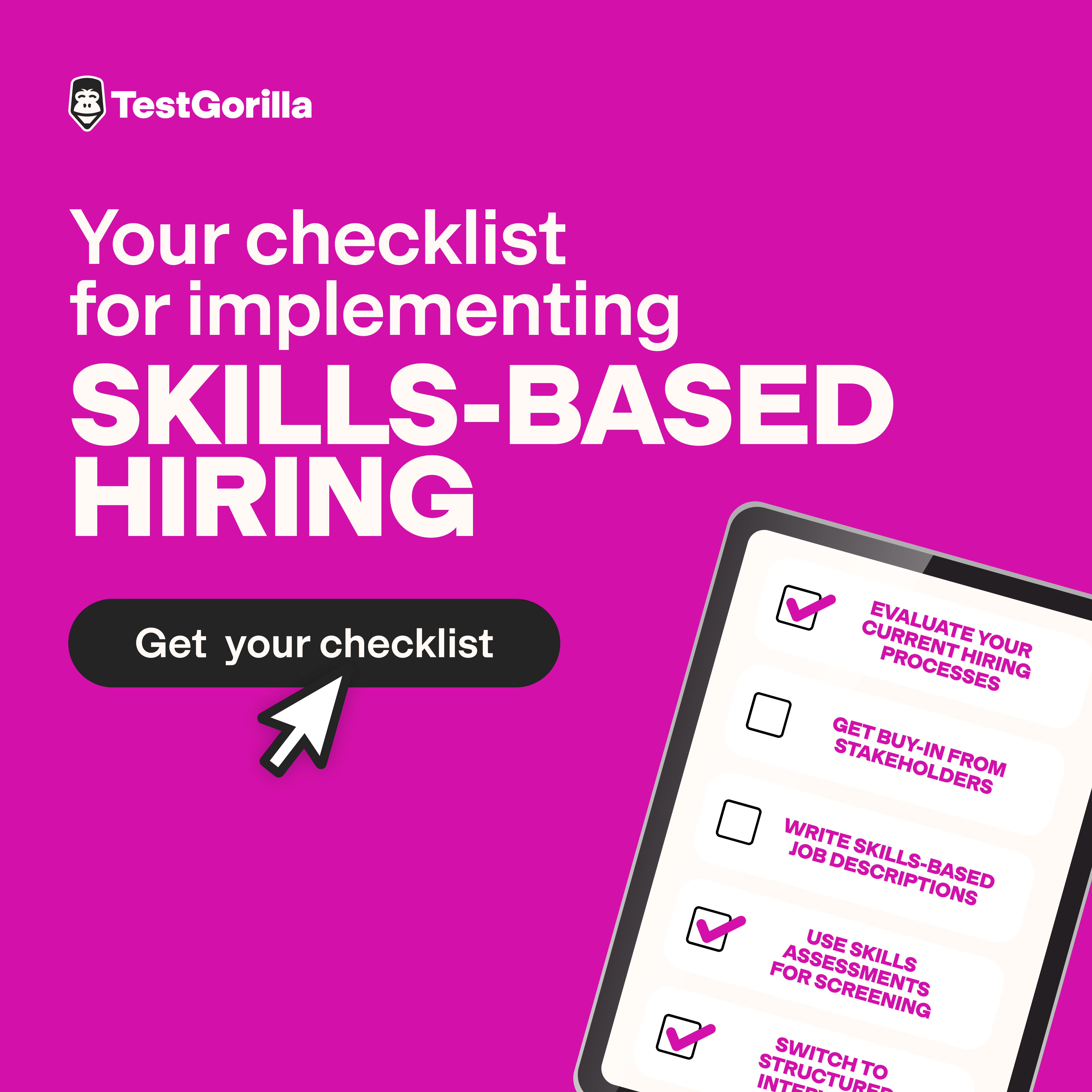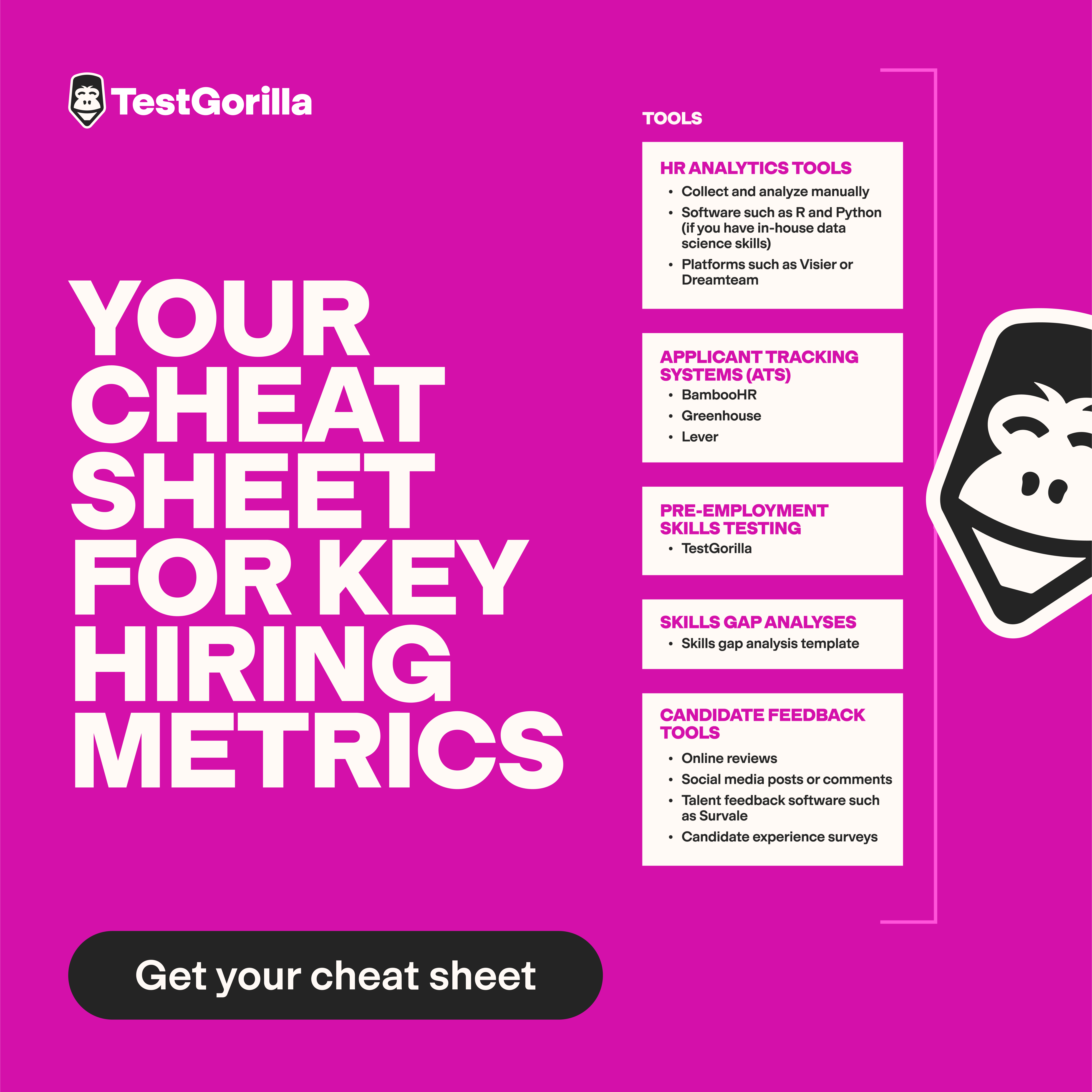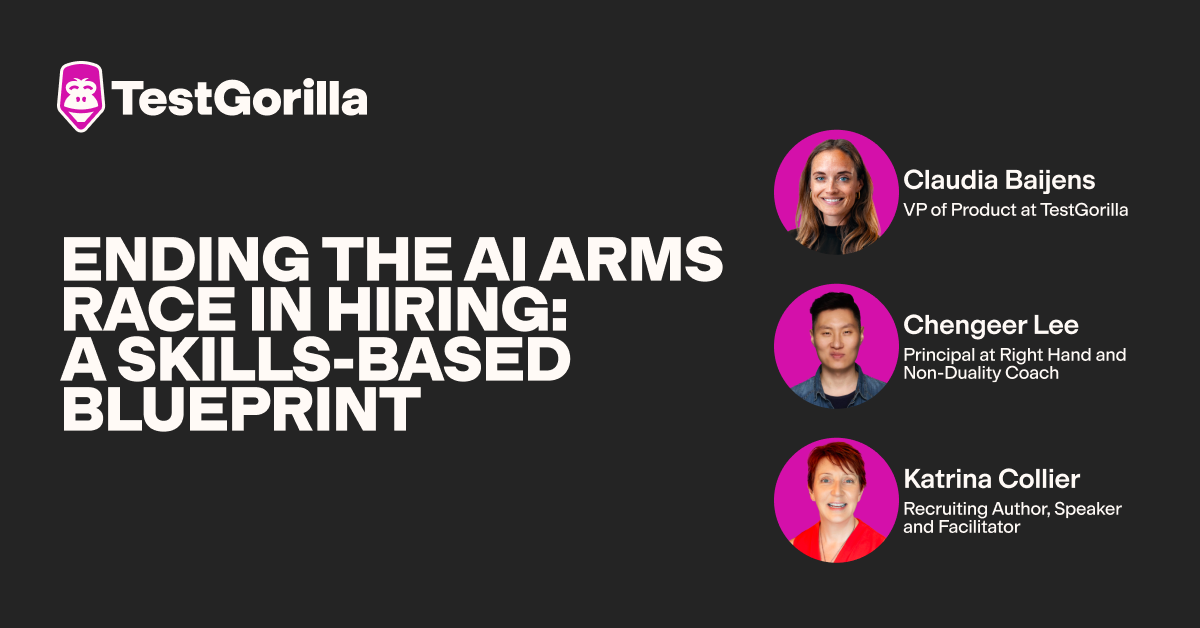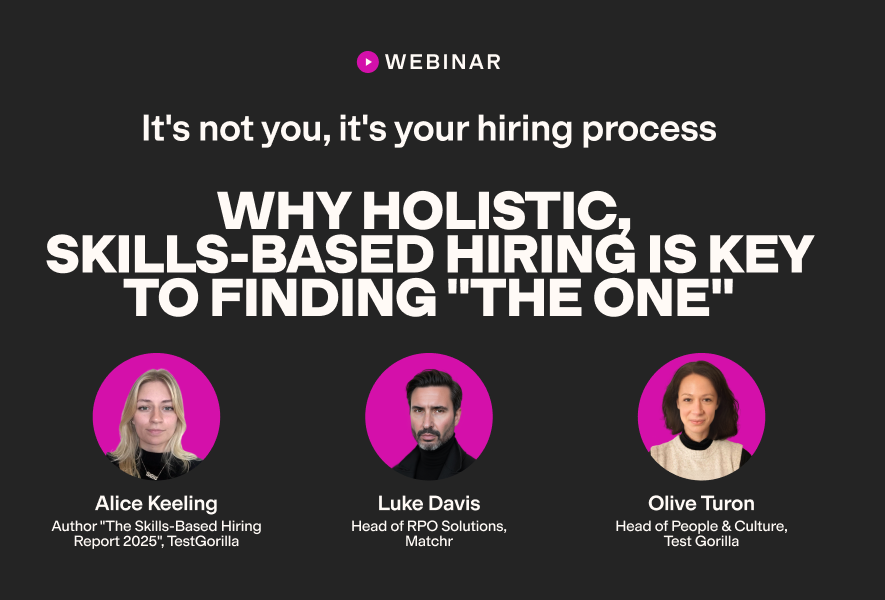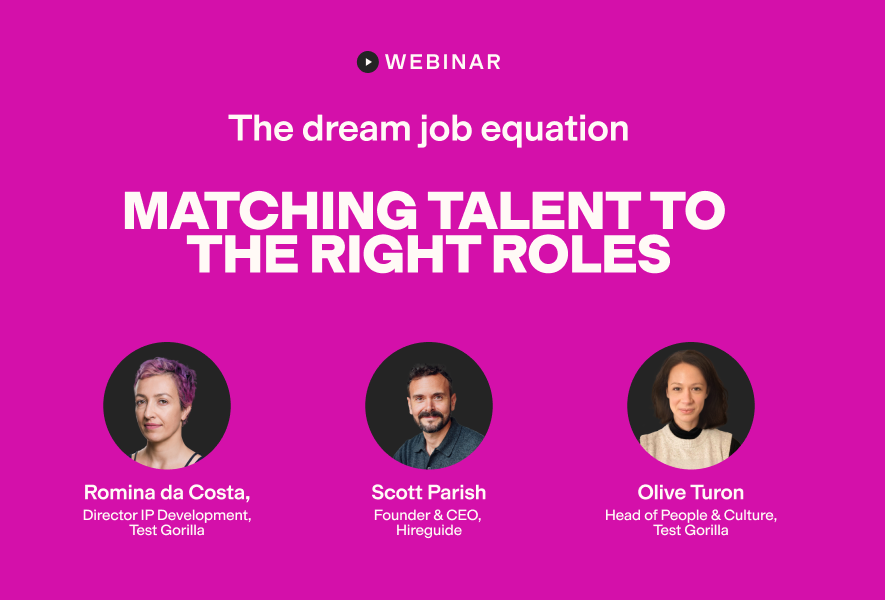If there’s a recipe for great hiring, solid candidate screening is a key ingredient.
But too many teams still rely on phone interviews – a method that’s inefficient across the board.
If you’re dealing with dial tones, scheduling headaches, and endless call logs to reach applicants – who may not even be qualified for the role – it’s time for a faster, fairer, stronger approach.
In this article, we explain why phone screen interviews no longer work and how AI tools (like TestGorilla’s AI video interviews) can reshape the way you screen talent.
Why phone screen interviews don’t cut it anymore
Hiring today needs to be quick, objective, consistent, and cost-efficient. But phone screen interviews are none of those things. Here’s why:
They can easily get derailed and waste time
What’s typically scheduled as a quick call to evaluate basic candidate fit frequently turns into a wandering conversation that runs twice as long as planned.
“Traditional phone interviews were always a drag for me,” Daniel Kroytor, CEO of TailoredPay, tells us. “It’s easy to get off track and have the interview take 30 instead of 15 minutes.”
Multiply that across a few dozen candidates, and half your week disappears – without necessarily improving your hiring decisions. Research shows that longer interviews don’t always lead to better evaluations.
They don’t work for large-scale or international hiring campaigns
Screening calls depend on real-time interaction, which quickly breaks down in large-scale or global hiring.
As Amit Raj, founder and CEO of The Links Guy, shares with TestGorilla, “Trying to account for multiple time zones, the sheer volume of candidates, and the international calling costs that would be incurred alone meant we didn’t engage much [with] phone interviews.”
There’s evidence to back this up. Harvard Business School search shows that time-zone gaps force people to sacrifice personal time to communicate with their remote colleagues. This challenge can apply to candidates as well. If they’re hours ahead of a recruiter, finding a time to talk often means early mornings, late nights, or long delays.
Now imagine that across hundreds of applicants in a wide-reaching hiring push. Coordinating phone screen interviews quickly becomes a logistical nightmare.
They often happen too late in the hiring funnel
Because phone screens require so much coordination, teams that rely on them actually tend to delay their use. As Raj shares, “We usually reserved [phone screens] for when we had someone at the final interview stage, which would be a much smaller pool.”
By then, you will have wasted hours on unqualified candidates. And when that happens, you’re back to square one: trying to find the perfect candidate, but now with less time and more pressure.
They can be inconsistent and unreliable
Even with a shared script, recruiters can run totally different screening calls. One may go off-script and be more conversational; another may stick rigidly to the questions and sound cold.
Inconsistency can also happen within the same recruiter. Mood, energy, and distractions may affect how they listen and what they latch onto. For example, they may get hung up on a shaky first answer and treat it as a sign of a poor fit, instead of digging into the candidate’s skills and experience to make that judgment.
When recruiters run multiple calls in a row, more inconsistency can arise from the contrast effect bias. A 2024 study found that interviewers’ impressions can shift based on who they spoke to right before, even when the two candidates are equally qualified.
Although that study focused on in-person interviews, screening calls are just as (if not more) vulnerable because they’re often done back-to-back and provide recruiters with fewer cues to ground their evaluations.
After all that, recruiters’ notes may not be reliable. They may reflect what stood out emotionally or psychologically in the moment, rather than what truly matters for the job.
They’re prone to bias
Phone screening interviews are voice-only, placing a heavy (and unfair) emphasis on how someone sounds: their accent, projection, pacing, and tone. These cues can feel meaningful – e.g., as if they “reveal” perceived nervousness or confidence – but they have little to do with actual job fit.
More importantly, they open the door to unconscious interviewer bias.
Research shows that interviewers consistently view candidates with non-native accents less positively than those with native accents, even when their communication is clear.
A 2025 study found that this accent bias is also gendered: Women with non-native accents were judged as “less hireable” than men with the same accents, especially when most evaluators were women.
Recruiters conducting screening calls may also fall victim to affinity bias, where they prefer candidates who speak like them or feel “familiar” in some way, factors that have no real connection to job fit.
In a format so dependent on voices, these biases can exclude qualified talent before they get a real chance to demonstrate their skills.
They’re not always inclusive
Phone screen interviews may disadvantage individuals who are Deaf or hard of hearing, have auditory processing challenges, or process information better visually. They can also force candidates to disclose disabilities or request accommodations before they’re ready.
As one individual shared in response to an Ask a Manager post:
“I am hearing impaired and really struggle on the phone, even with assistive technology. [...] Although I am usually upfront about [needing accommodation] during the interview process, I like to be the one to decide when/how to disclose it. A phone screen generally takes that choice away from me.”
Why AI is the way forward in screening candidates
AI-powered screening addresses many of the problems that make phone screen interviews unmanageable. Let’s examine how.
It enables early, skills-focused filtering
One of the biggest advantages of AI is that it lets you screen everyone up front based on the criteria that matter most. You could, for example, use AI resume screening or scoring tools to quickly narrow your applicant pool to candidates who meet the exact requirements of your role.
A 2025 literature review by Liliana Hawrysz highlights this benefit, noting that “AI systems can efficiently filter candidates based on predefined criteria, identifying those who align with role-specific requirements and eliminating unqualified applications.”
It saves time, money, and manual work
A 2025 field experiment by the University of Chicago’s Booth School of Business found that AI interviews cost almost 50% less than human-led ones: $1.30 versus $2.48. Those savings stack up fast when you’re screening hundreds or thousands of applicants each year.
The experiment also discovered that recruiters spent far less time on manual, admin-heavy tasks – including scheduling, a significant pain point of screening calls.
Raj’s team has experienced this firsthand. By using AI-backed assessments to filter candidates early, they’ve seen major benefits:
“[AI] massively reduced the amount of manual work the recruiter had to do [and took] care of most of the filtering. This would leave us only the candidate with the base skills that are a bare minimum for our [roles].
“For example, we had a job post that received 895 [applicants]. Two rounds of AI-proctored assessments dwindled this number down to only seven candidates for interview. Of those candidates, five of them did well at [the] interview, and we made two hires.”
It can handle large applicant pools and global hiring
AI can quickly screen large volumes of applicants, automatically manage scheduling, or skip scheduling entirely by letting candidates complete interviews whenever it suits them.
Human-led phone screening can’t scale this way. Hawrysz’s literature review supports this, highlighting that a key benefit of AI in screening is scalability, thanks to automated filtering, easier scheduling, and batch processing.
All this makes high-volume and international hiring campaigns much easier to manage.
It brings structure and focus
Where screening calls can go off course, AI video interviews stay on track. Every candidate gets the same structure, questions, time limits, and opportunity to showcase their experience and skills.
Take TestGorilla’s AI video interviews, for example. They all follow a clear, structured script but go even further by generating role-specific questions and, in conversational formats, follow-ups tied to the candidates’ responses. This prevents conversations from drifting into irrelevant topics or running over time.
It makes evaluations more consistent and reliable
AI video interviews apply the same criteria to every candidate and generate clear transcripts and rubric-based scores. That creates a more consistent, objective, dependable foundation for evaluating talent.
For instance, with TestGorilla, both one-way and conversational AI interviews score candidates against transparent rubrics that hiring teams can edit. You can see exactly how TestGorilla’s AI generated each score, review the transcript, and override any score as you see fit.
This structure isn’t limited to AI video interviews or even early screening. Raj tells us how his team uses AI to make later-stage comparisons easier and more data-driven:
“AI note-takers were used to record the final interview. Not only for easy comparison later, but we would also feed the transcript into a custom GPT for analysis. This would then be matched to a scoring matrix inside our AI, in order to get a more ‘scientific’ score.”
It can help reduce bias (when used carefully)
AI relies far less on subjective cues – like accents, tone, or perceived charisma – than screening calls do. Instead, it assesses candidates against job-relevant criteria, which can help reduce bias.
Research backs this up. A 2024 study found that AI can “reduce unconscious bias during initial screening” because it uses “objective data and set[s] criteria” for evaluation.
Candidate sentiment reflects this as well. In the Booth School of Business study, 78% of candidates said they prefer AI interviews to human ones, partly because they perceived AI interviews as less biased.
That said, AI isn’t fully bias-proof. Nearly all studies that highlight AI’s potential to reduce bias also stress the need for human oversight (which we’ll explore later).
It can be more inclusive than phone screen interviews
Unlike real-time, voice-only phone calls, AI interviews can be conducted via video – with captions, at a preferred pace, and without requiring disclosure of disabilities or accommodation requests.
It can lead to better hiring outcomes overall
According to TestGorilla’s 2025 State of Skills-Based Hiring report, 94% of employers investing in AI say it has improved their hiring process. Recent studies and reports support this finding.
The Booth School experiment found that “AI-led interviews increase job offers by 12%, job starts by 18%, and job retention up to four months by 16-18% among all applicants.”
Another study from 2023 indicated that “AI recruitment tools offer benefits such as improved recruitment quality, cost reduction, and increased efficiency.”
And Hawrysz’s 2025 literature review cited 2019, 2020, and 2024 research to conclude that “AI systems [can] identify patterns associated with successful hires, enabling recruiters to forecast candidate potential and job performance more accurately.”
The best insights on HR and recruitment, delivered to your inbox.
Biweekly updates. No spam. Unsubscribe any time.
Don’t go all-in on AI – human input remains essential
Even with its many advantages, AI shouldn’t run your entire hiring process on its own. Human input still matters – for several reasons.
First, some candidates are still wary of AI. While the Booth School study concluded that most candidates prefer AI interviews, a small percentage (3.2%) quit the interview due to AI aversion.
Kroytor has seen this firsthand: “I [have] found that some candidates are unwilling to talk to AI and see it as a sign that the employer is someone who doesn't care about the candidate experience.”
Additionally, some judgments simply require a human perspective. As Booth School researcher Brian Jabarian notes, “ It’s not yet possible to delegate the more nuanced, in-depth evaluation of candidates entirely to AI. We will need human intervention to oversee and review the performance of AI recruiters.”
Raj agrees that a cautious approach to AI in talent acquisition is best. He suggests using it to reduce manual labor, or for “anything where you trust it to be as accurate as a human,” but not as a sole or final decision-maker. “It still needs oversight from a human, and some ‘sanity checks’ to ensure you’re not leaving too much [to] the AI,” he adds.
In practice, that can look like:
Using AI resume screening, AI resume scoring, or skills assessments to sift out unqualified candidates.
Running structured AI video interviews to replace the traditional phone screen step.
Bringing in humans to have deeper conversations, discussions around team fit, and face-to-face interviews, once the candidate pool is smaller and more qualified.
This human-AI approach has already proven successful. In a 2022 study, researchers found that a “hybrid model outperforms both pure AI and human in terms of accuracy and screening error rate.” They also noted that “incorporating even one human in the loop can lead to significant improvements in both selection and screening accuracy.”
Swap phone screening for a modern approach with TestGorilla
Traditional phone screen interviews are slow, inconsistent, difficult to scale, and prone to bias. AI can fix those issues by making screening faster, fairer, and more reliable – while still leaving you in charge of final hiring decisions.
With TestGorilla, adding AI to your screening process is simple. Get started today by exploring our AI video interviews, booking a free demo to see the platform in action, or signing up for a free plan.
Contributors
Daniel Kroytor, TailoredPay, CEO
Amit Raj, The Links Guy, Founder & CEO
You've scrolled this far
Why not try TestGorilla for free, and see what happens when you put skills first.




